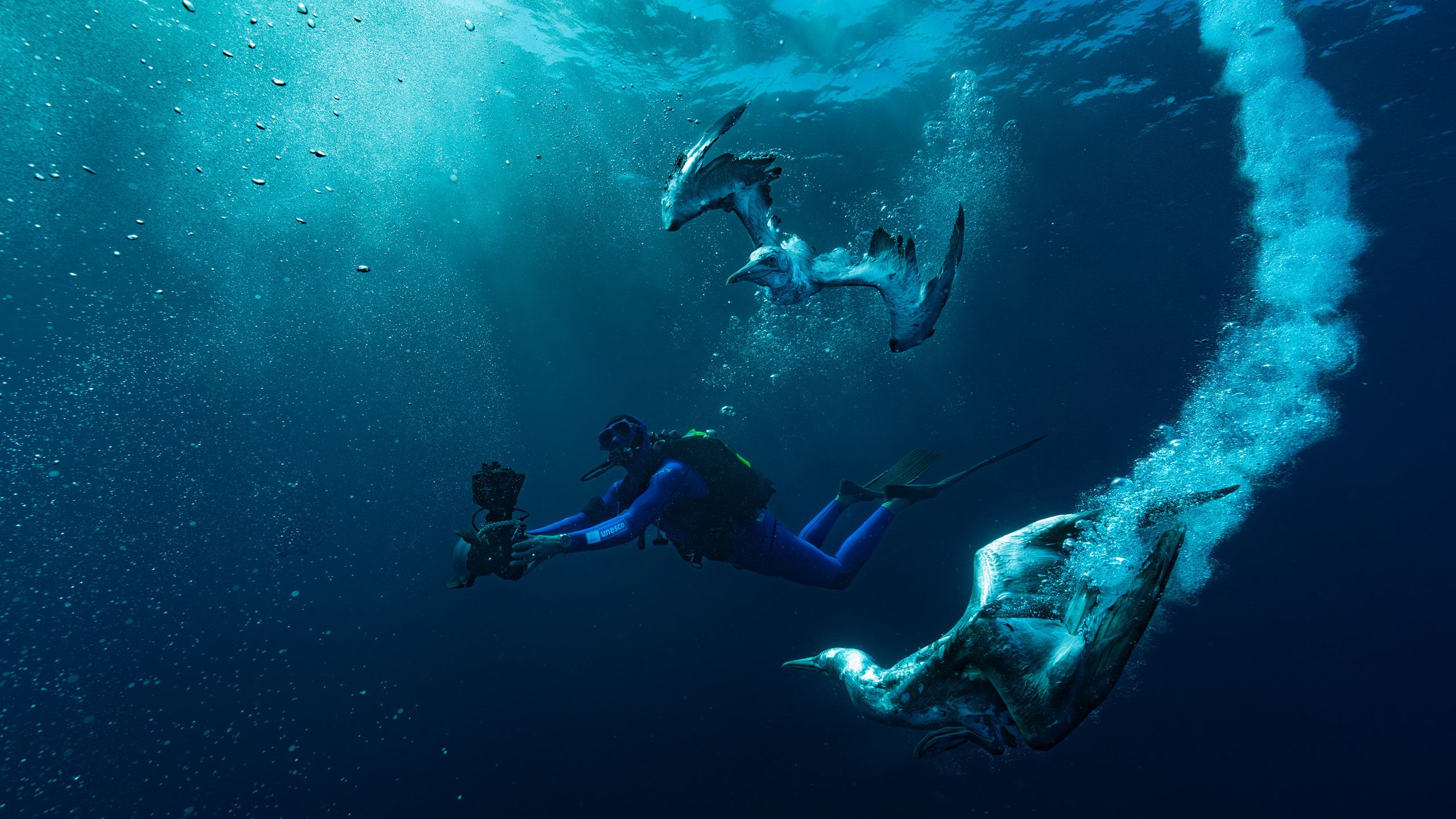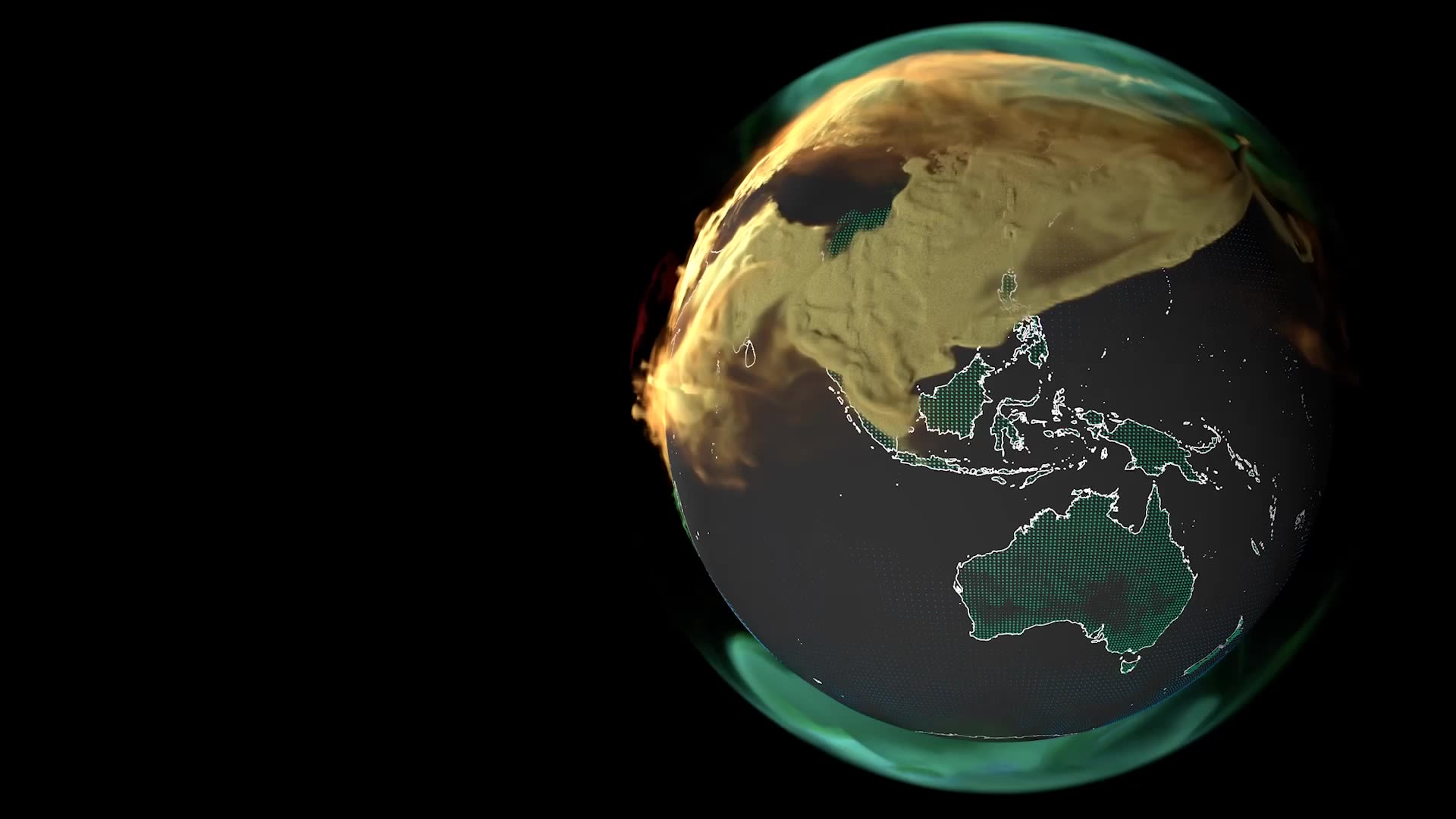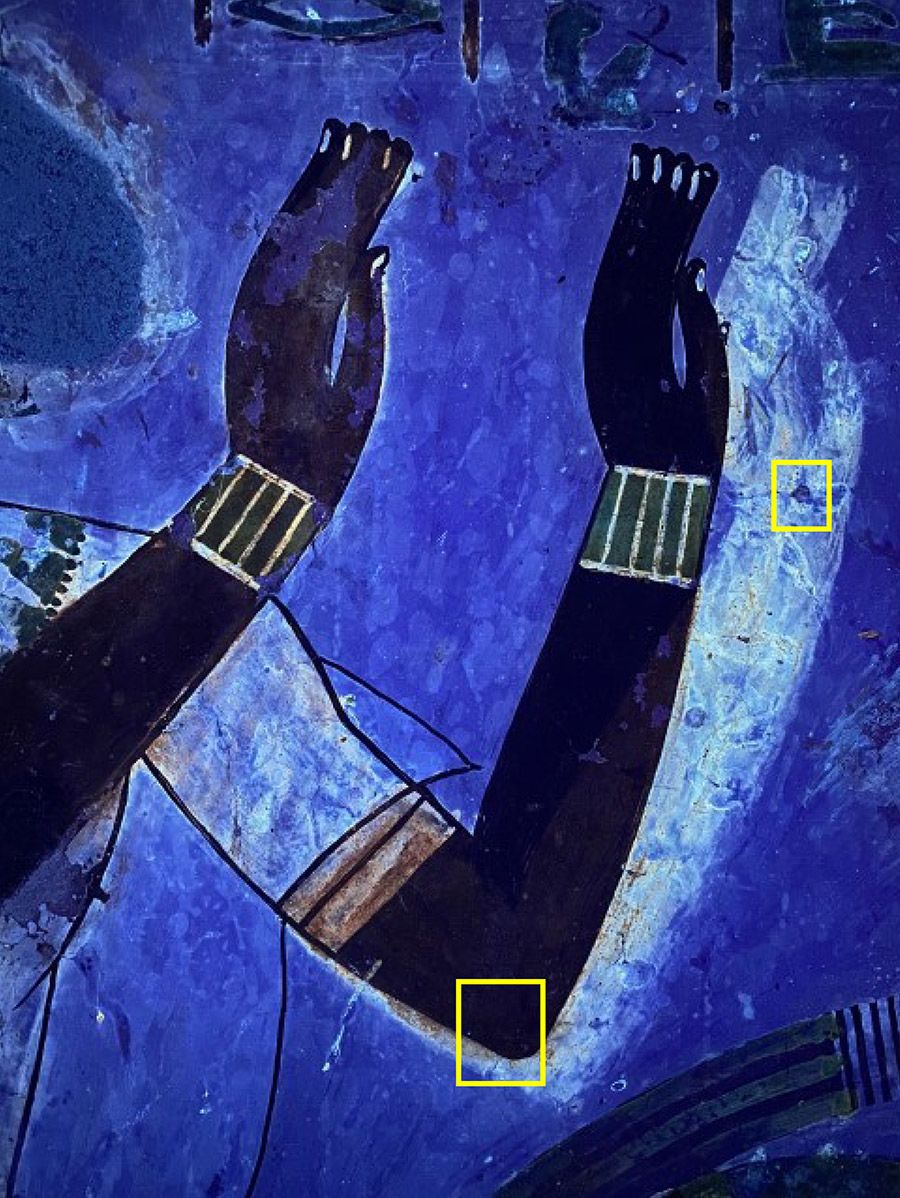The world’s biggest animal migration and more — July’s best science images
The month’s sharpest science shots — selected by Nature’s photo team.

Feeding frenzy. A diver jostles for position with hungry seabirds while observing the Great Sardine Run — a mass movement of billions of sardines (Sardinops sagax) along the east coast of South Africa. The journey is thought to be one of the world’s biggest animal migrations in terms of biomass — the fish gather in shoals that are several kilometeres long, and attract swarms of predators including dolphins, sharks, whales and gannets.





Credit: Angelos Tzortzinis/AFP via Getty
Credit: Angelos Tzortzinis/AFP via Getty

Credit: Nicolas Economou/Reuters
Credit: Nicolas Economou/Reuters

Credit: Aristidis Vafeiadakis/ZUMA Press Wire/Shutterstock
Credit: Aristidis Vafeiadakis/ZUMA Press Wire/Shutterstock

Credit: Alexandros Avramidis/Reuters
Credit: Alexandros Avramidis/Reuters
Island on fire. For the past few weeks, an intense heatwave has swept through parts of southern Europe including Greece, where severe wildfires have broken out. Thousands of tourists and residents on the island of Rhodes were forced to flee — often on foot — as smoke filled the air and flames ripped through the countryside. Firefighters fought to control the blazes amid hot, dry and windy conditions. The World Weather Attribution group has found that such extreme heat would have been ‘virtually impossible’ without climate change.

Credit: NASA, ESA, CSA, STScI, Klaus Pontoppidan (STScI)
Credit: NASA, ESA, CSA, STScI, Klaus Pontoppidan (STScI)
Star-forming region. NASA unveiled this stunning picture of the star-forming region closest to Earth to mark one year since the James Webb Space Telescope (JWST) released its first photograph. The image shows an area in the Rho Ophiuchi cloud complex, 120 parsecs (390 light years) away, that contains roughly 50 young stars — most of which have masses similar to, or less than, that of the Sun. The vertical and horizontal red streaks in the top and right side of the image are molecular hydrogen illuminated by jets of material produced by newborn stars. The paler veils of dust in the bottom half of the picture surround a single star larger than the Sun.
Credit: Schmidt Ocean Institute (this video has no sound)
Credit: Schmidt Ocean Institute (this video has no sound)
Octopus nursery. This rare footage of brooding deep-sea octopuses was captured by a remotely operated vehicle during a recent expedition off the coast of Costa Rica, at a depth of more than 2,800 metres. Researchers observed baby octopuses hatching in the area for the first time, disproving the idea that conditions there are inhospitable for developing young. The octopuses could belong to a species that is new to science. The discovery “proves there is still so much to learn about our ocean”, says Jyotika Virmani, a physical oceanographer at the Schmidt Ocean Institute in Palo Alto, California.
Dino for dinner. A dinosaur and a mammal are forever locked in a deadly embrace in this extraordinary fossil. The left hand of the small mammal Repenomamus robustus is wrapped around the lower jaw of the beaked dinosaur Psittacosaurus lujiatunensis. The mammal’s jaw closes over the dinosaur’s rib. Researchers who described the fossil say it could provide evidence of a mammal preying on a much larger dinosaur. Others caution that further work must be done to confirm that the fossil is genuine.
Credit: Michael Skrepnick/G. Han et al./Sci. Rep.
Emissions revealed. Fossil-fuel emissions from the Northern Hemisphere swirl in this visualization from NASA, which shows the carbon dioxide in Earth’s atmosphere in 2021 as if it were visible. Four main sources of CO2 are shown: fossil fuels in orange, burning biomass in red, land ecosystems in green and ocean emissions in blue. The dots on the surface show how atmospheric CO2 is taken up by land ecosystems (green) and the ocean (blue).


Credit: Alexander Schippers
Credit: Alexander Schippers
Life finds a way. Crows and magpies are building nests with the metal spikes meant to deter them from perching or nesting. Carrion crows (Corvus corone) and Eurasian magpies (Pica pica) in the Netherlands, Belgium and Scotland were found to have plucked the sharp metal pins off buildings to use in their nests. “Even for me as a nest researcher, these are the craziest bird nests I’ve ever seen,” said biologist Auke-Florian Hiemstra at Naturalis Biodiversity Center in Leiden, the Netherlands, in a Twitter thread outlining examples of how birds have repurposed anti-bird infrastructure. “Some birds are just done with our stupid spikes.”

Secret garden. A botany-inspired art installation has been unveiled in the Thames Tideway Tunnel, a 25-kilometre-long ‘super sewer’ in London designed to capture sewage overflow that would otherwise end up in the Thames estuary. The colourful ‘loo garden’ uses artificial plants and repurposed waste materials — it would be too challenging to bring light and water for real plants 50 metres underground. “This subterranean haven provides a multisensory experience, featuring the nature that will thrive once the super sewer is fully up and running,” said Andy Mitchell, Tideway’s chief executive.


Draw like an Egyptian. X-ray images of wall paintings in Egypt’s Theban Necropolis are offering a glimpse into the processes of artists some 3,000 years ago. In this painting — located in the tomb of an official named Menna — the position of Menna’s arm has been changed, and the original version (presumably a mistake) painted over. A portrait of Ramesses II was also found to have undergone several alterations.
Credit: LAMS-MAFTO CNRS/Sorbonne Université

